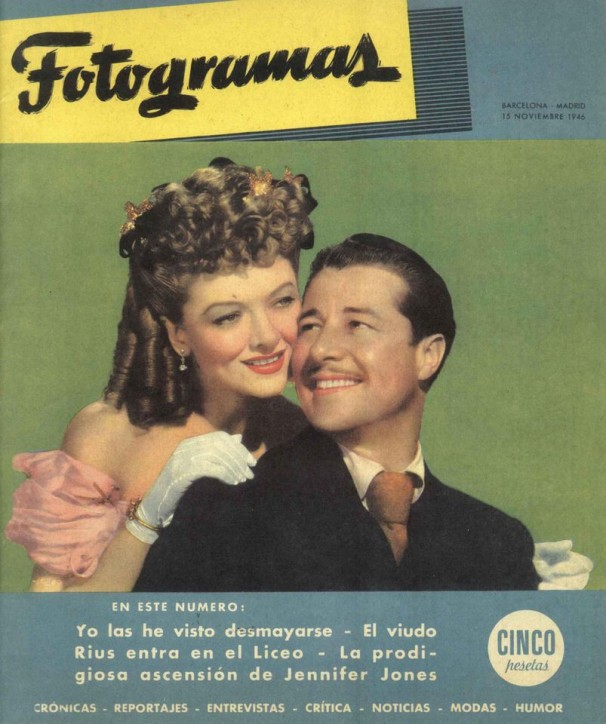
For people living in Spain in the’40s and ’50s, cinema quickly became much more than a few hours of leisurely fun.
The “Fotogramas” exhibit on display at the King Juan Carlos I Center, which opened Tuesday, explores the significance of cinema for Spaniards who lived in a decade under a severely oppressive Franco dictatorship at the end of a brutal civil war. Founded in 1946, Fotogramas is the only Spanish film magazine that still exists today. The displays of photographs from the publication related to cinema, censorship and the general film culture document some of the iconic moments in cinematic history and provide nostalgic evidence of how cinema gave Spaniards hope for what life could someday be like.
“The glamour of Hollywood was really attractive to people at the time, partly as kind of distraction from everyday difficulties but also because it kept alive a feeling that things could be otherwise,” said Jo Labanyi, an NYU professor of modern Spanish culture.
Labanyi worked with Ana Cabello, the exhibit’s curator in Madrid, to bring the pieces from Spain to NYU. Visitors have the opportunity to flip though a full copy of the first-ever issue of Fotogramas.
Celebrity culture was an outlet for Spaniards to explore the lives of people who were not enduring hardship at home. A highlight of the exhibit is a set of 34 Fotogramas covers from 1946 to 1962 that feature some of the famed and idealized Hollywood actresses including Audrey Hepburn, Ava Gardner, Elizabeth Taylor and Marilyn Monroe.
“We took ones where the stars are recognizable,” Labanyi said. “We thought it’d be good to end with Marilyn Monroe’s death in 1962 because that was an iconic moment.”
Aside from the glamour of cinema, the exhibit also touches upon the strict censorship that affected all forms of media at the time. Also featured are handbills from Labanyi’s personal research collection, examples of censored cinematic images, photographs of several luxury cinemas in Barcelona and Madrid and censorship reports for two Hollywood films.
“The key thing that was censored was sexuality,” Labanyi said.
This censorship is evident in photographs of actresses that were edited and made more modest to appease the government censors.
Susana Toro, a first year master’s student in the Steinhardt School of Culture, Education and Human Development, found the doctored images to be fascinating.
“I think the censorship photos are really interesting because it shows how things have changed so much in just a few years,” Toro said.
A typical issue of Fotogramas is not much different from today’s celebrity magazines like People or Us Weekly. Since the target audience was primarily female, the magazine contained gossip about the love lives of famous film stars. The magazine also features fashion, film reviews, recipes, quizzes as well as a lot of photographs of Hollywood starlets living their daily lives, giving Spaniards hope about their own lives.
“It was interesting to see how much Spanish people idealized film stars back then,” said Stern freshman Jewel Jiang. “We still seem to idealize them today.”
“Fotogramas” exhibit will be on display at the King Juan Carlos I Center until May 3, 2013.
Deeksha Mehta is a contributing writer. Email her at [email protected].






















































































































































